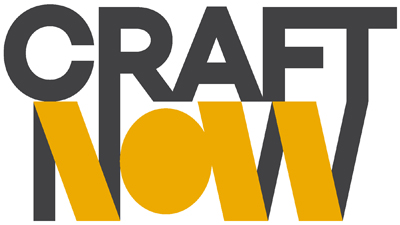At the Center
Masters of American Craft
Built on a Legacy
AMERICAN STUDIO CRAFT AT
PHILADELPHIA MUSEUM OF ART
Founded in 1876 as the Pennsylvania Museum and School of Industrial Art, the Philadelphia Museum of Art differentiated itself from other fledgling American art institutions in Hartford, Connecticut, Boston, Chicago, and New York by assembling a collection of decorative arts.1 Influenced by the 1876 Centennial Exposition, the first international exhibition to be held in the United States, the museum formed its initial collection with objects directly purchased from the exposition.2 Modeling itself after the Victoria and Albert Museum in London, England, renowned for housing the finest examples of ceramics, glass, wood, and metalwork, the Philadelphia Museum of Art focused upon exceptional examples of decorative arts, made by hand or machine, both historical and contemporary. Under the direction of curator Edwin Atlee Barber, hired by the Museum in 1892, the collection was strengthened with objects of all media acquired directly from World’s Fairs and manufacturers.3 Like the Victoria and Albert Museum and its School of Design, the Museum and School of Industrial Art intended to use the collections pedagogically to improve instruction of applied arts and, in effect, inform taste and advance the manufacture of American industrial art.
Artist Bios
Ted Hallman
Ted Hallman (b. 1933, Quakertown, PA), a nationally acclaimed fiber artist, dedicated his career to the exploration and mastery of technique, structure and form. His journey as an artist began as a student at Temple University’s Tyler School of Art, from which he received his bachelors of fine arts degree in 1956. Hallman continued his studies at the Cranbrook Academy of Art in Bloomfield Hills, Michigan, graduating in 1958 with a master of fine arts in textiles and paintings and received a Ph.D. in Educational Psychology at University of California at Berkeley in 1974. He served as head of the textile department from 1963 to 1970 at Moore College of Art and Design in Philadelphia, where he initiated a curriculum and work-study program with the textile industry in New York City. From 1975 through 1999, Hallman influenced a generation of artists through his successful career as the head of the textile department at Ontario College of Art and Design (now OCAD University) in Toronto. While at Ontario College, he originated “off campus” programs in Kyoto, Japan; Paris, France; and Lake Como and Florence, Italy. For over six decades, Hallman has crisscrossed the world to share his skill, knowledge, and love of weaving through workshops at numerous universities and art centers, while also spending time researching textiles from around the globe. Maintaining studios in Lederach, Pennsylvania and Santa Fe, New Mexico, he continues to innovate in his weavings using novel approaches to structure.
—Elisabeth R. Agro
Robert Winokur
Robert Winokur (b. 1933, Brooklyn, NY) has spent his fifty-nine-year career engaged in the pursuit of form. Introduced to ceramics by his mother as a young boy, he took up sculpture and pottery under the tutelage of Rudolf Staffel at Temple University in Philadelphia. He received a bachelor of fine arts degree in 1956 from Temple’s Tyler School of Art, where he majored in sculpture and ceramics. Subsequently, he obtained a master of fine arts degree in ceramics from the New York State College of Ceramics at Alfred University in 1958.
While realizing the possibilities of his own form of artistic expression Winokur helped several generations of students explore theirs, teaching at Tyler School of Art at the invitation of Staffel, from 1966 until his retirement in 2005. He and his wife, Paula Winokur, a ceramist in her own right, maintain a home, studios, kilns and a gallery in Horsham, Pennsylvania.
—Elisabeth R. Agro

